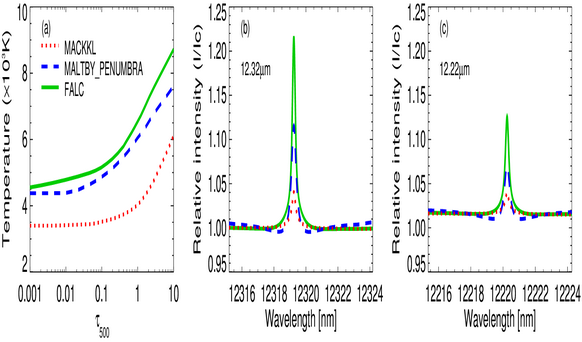Explore another possibility for accurate measurement of the solar magnetic field
The Sun is the closest star to humans, but do we really understand it? In fact, the Sun is not as quiet as it seems, and large or small solar activities occur every moment. Large solar eruptions (such as Coronal Mass Ejection, CME) can have a fatal impact on the Earth. You may want to ask what causes it?
Scientific researches show that the source of these solar activities is the magnetic field. Therefore, how to accurately measure the solar magnetic field has become a problem that contemporary solar physicists have always wanted to overcome.
Up to now, all measurements related to the solar magnetic field have been polarization measurements. Based on the principle of the Zeeman effect, we can simply obtain the magnetic field strength by measuring the Zeeman splitting of a magnetic sensitive spectral line. However, this is almost inapplicable for visible light and near-infrared spectral lines.
The Mg I 12.32 μm line in the mid-infrared band makes it possible to directly use the Zeeman splitting formula to measure the magnetic field. It is the spectral line with the highest magnetic sensitivity found so far, and it is also the main working line selected by AIMS (the Infrared System for the Accurate Measurement of Solar Magnetic Field, Deng et al. 2016), which is the first astronomical telescope working in the mid-infrared wavelength in China.
The authors from National Astronomical Observatories of Chinese Academy of Sciences (NAOC) and National Solar Observatory (NSO) of the USA conducted a detailed study on the polarized radiation transfer process of the working line of AIMS. The study was published in Astronomy & Astrophysics on Feb. 10, 2021.
The team led by Prof. Yuanyong Deng from NAOC simulated the formation process of the Mg I 12.32 μm and Mg I 12.22 μm lines, and compared the difference between the two lines in diagnosing magnetic fields of the solar atmosphere in detail.
The results show that the Mg I 12.32 μm line is more suitable for the solar magnetic field diagnosis. And a fast new magnetic field calibration technology is also developed.
"Our findings will help us to better understand future observations from AIMS," said Dr. Xianyong Bai, who is the corresponding author of this study and is from NAOC.

Figure 1: Different solar atmosphere models and the corresponding synthetic Stokes I profiles. (Image by Li et al)

Figure 2: AIMS telescope (Credit: HSOS/NAOC)
The paper can be accessed at https://www.aanda.org/articles/aa/abs/2021/02/aa39365-20/aa39365-20.html.
Media contact: Prof. XU Ang, annxu@nao.cas.cn